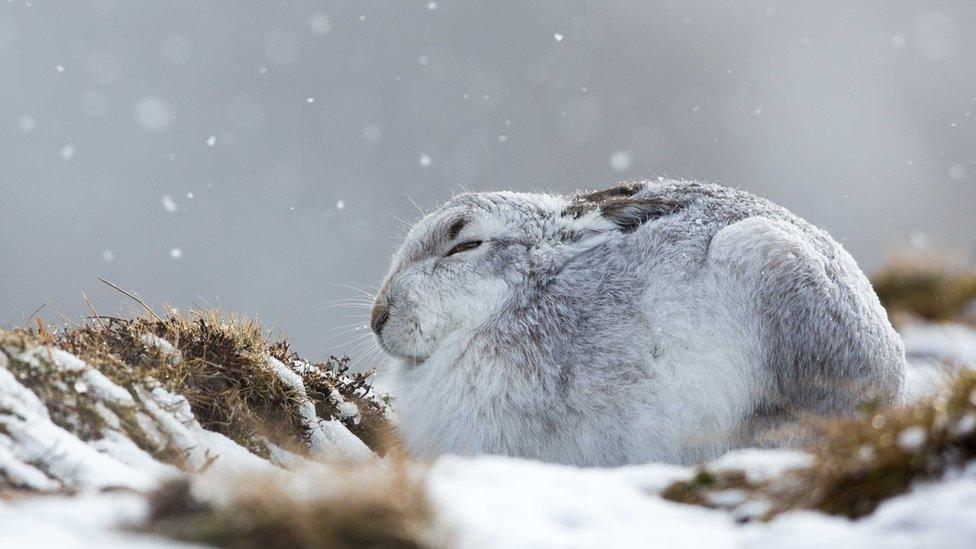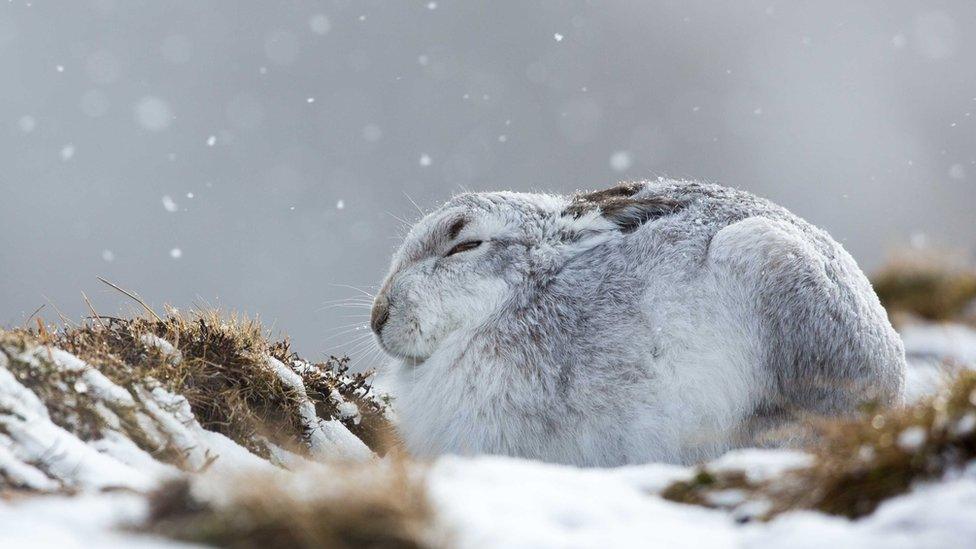Peak District mountain hare population study welcomed
- Published

Mountain hare pelage is brown in summer and turns white in winter
A preliminary study suggests the Peak District's mountain hare population may be higher than previously thought.
About 2,500 of the creatures were previously estimated to be in the area.
Research by the Game and Wildlife Conservation Trust (GWCT) said numbers may be higher.
However conservationists, who have been funding research in the area for several years, said they believed the rare species was still in decline.
'Breakthrough'
Nick Hesford, lead author of the study, said the "very much preliminary results" came as "welcome news".
He said the new study suggests population density could be "around 52-126 mountain hares per square kilometre".
He said the research differed from that previously carried out by Manchester Metropolitan University in that it had surveyed a greater proportion of driven grouse moors.
Dr Hesford, who has a PhD in community ecology from Queen's University, Belfast, added the counts were conducted by the Peak District Moorland Group, with gamekeepers counting hares across 16 grouse moor estates in the Dark Peak area of the national park using spot lamps at dusk, when hares are likely to be more active.
Native to Scotland, mountain hares were introduced into England in the 1800s by shooting estates, but now only survive in the country in the Peak District.
Last year campaigners called for tougher legislation to prevent unlicensed culls, after more stringent measures were introduced in Scotland.
Referring to the situation in Scotland, Dr Hesford said mountain hares carried a tick which could transmit a virus that affected grouse productivity.
"If mountain hare numbers go uncontrolled, these moorlands [in Scotland] aren't economical for grouse any more," he said.
"Although we only have data from one year of surveys so far, the adoption of this new methodology in the Peak District is a breakthrough for the population, and it is our hope this survey continues to help conservation efforts in the future."
Nida Al-Fulaij, conservation research manager at the People's Trust for Endangered Species (PTES), said the organisation had been funding research into mountain hare conservation in the Peak District for several years.
"Both the scientific data and anecdotal evidence show that numbers have been dropping annually," she said.
"There are limitations, with any technique, establishing how many hares there are, but the data shows the population is smaller than reported 20 years ago.
"We welcome any new research or information about mountain hares, but these, as the authors of the report state, are very preliminary results."

Follow BBC East Midlands on Facebook, external, Twitter, external, or Instagram, external. Send your story ideas to eastmidsnews@bbc.co.uk.
Related topics
- Published2 March 2021

- Published31 January 2021

- Published27 January 2021
